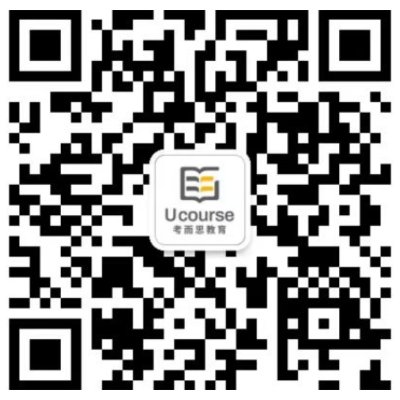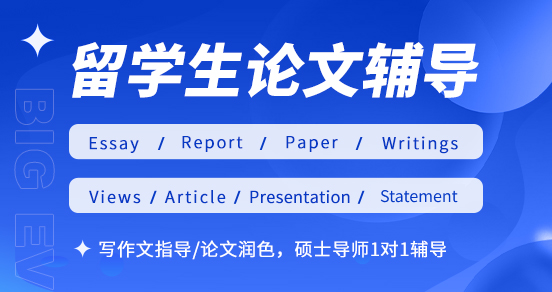
注释书目与文献综述写作
If you have already worked on a research paper, research proposal, or dissertation, then you probably know what is anannotated bibliographyas well as its characteristic peculiarities. However, many writers still confuse this task with aliterature review paper, though they are different. In our tutorial, we are going to help you figure out what makes an annotated bibliography different from a literature review by focusing on the characteristic features of both assignments.
Whereas both pieces of writing require summarizing academic sources related to one topic, they differ by the way of presenting findings. Both an annotated bibliography and a literature review can describe the same subject. However, a literature review aims to answer the research question suggested in the work. In its turn, an annotated bibliography focuses on evaluating the importance of sources related to the topic.
Annotated Bibliography Writing: Efficient TipsIf you want to succeed in annotated bibliography writing, you should know that there are several different types of annotated bibliographies:
- Descriptive. Such annotated bibliography aims to describe the source without summarizing the actual hypothesis, argument, or messages conveyed by the author. As well as an abstract, it describes the period of time the author investigates the issues, what questions the author addresses, as well as any other specific features that are worth attention. Keep in mind that a descriptive annotated bibliography does not require providing criticism of the content. Such a bibliography aims to review the literature before carrying out a broader study;
- Informative. Such annotated bibliography aims to summarize the content, main argument, and key messages the author stated. Typically, it contains a hypothesis, methods, findings, and a conclusion. As well as in a descriptive type, you are not supposed to state your own critical comments. To put it simply, by an informative annotated bibliography, you need to answer the following questions:
1)What are the author’s main messages?
2)What are the author’s key findings?
3)What suggestions or recommendations did the author provide? - Evaluative. Such annotated bibliography includes your evaluative comments about the content of the source. Professors often ask their students to write such annotated bibliographies, as they enable students to think critically focusing on the strengths and weaknesses of the approach taken by the author. When writing an evaluative bibliography, you can answer the following questions:
a) Is the author’s reasoning sound?
b) Is the methodology appropriate?
c) Does the source express interesting/relevant ideas?
d) How does the author address the issues related to the topic?
As you can see, this annotated bibliography type allows providing an in-depth assessment of the source, which may help the target audience understand if the source fits the research topic.
Assess the Relevance of the Sources You UseIt goes without saying, all the sources you use in your annotated bibliography should be credible, relevant, and peer-reviewed. Besides, each of the sources you used in your paper should contribute to the development of your research topic. To determine if you should use the source in your paper, you should be able to critically evaluate the central argument of the source. In case you are planning to include a non-textual source in your paper, you should clearly state its relevance. To figure out if your annotated bibliography is written well, your readers should understand the value of your source for the topic, its accuracy, as well as its limitations and effectiveness in addressing the research problem. By keeping these points in mind, you will find it easier to establish whether to use a source in your annotated bibliography or not. Besides, you can have a look at the following questions, as they will help you understand if you are interested in using a particular source in your annotated bibliography paper:
- Are you interested in the way the author investigates the research question?
- Do you think research findings promote new ways of understanding the research problem?
- Are you interested in the way the author uses the theoretical framework?
- Does the source have solid evidence you would like to cite in your paper?
- How are the author’s conclusions related to the successful investigation of the topic?
A lot of writers mistakenly believe that a literature review is just an annotated bibliography turned into the text that comprises several paragraphs. However, a literature review is much more than just a synopsis of the literary works. At the same time, it is not a series of reviews of different academic sources. The main goal of your literature review is to connect your study to the existing theory and research pertaining to your topic. A good-looking literature review will demonstrate the author’s awareness of the contributions of other scholars into the development of the topic. If you manage to succeed with completing this assignment, you will be able to convince your reader that your paper is a significant part of the ongoing scholarly discussion.
Have a look at some steps you need to take to write a winning literature review:
1. Select a topic that fits your research interests and learn more about it. If you can select a subject for your paper, you need to pick up the one that is clear and relevant. By working with a testable research question, you will be able to show your contribution to the topic development;
2. Carry out sociological research on your topic of interest. This stage consists of several steps:
- Make up an annotated bibliography listing all sources that seem interesting and relevant to your topic. Briefly summarize each source to understand if it is appropriate for your study;
- Check if some of your sources rely on the same theories. If you find any similarities in their approaches, you can use this “conversation” in your literature review;
- Check if there are any discrepancies between the approaches used by researchers. After finding some, make sure to evaluate these differences to understand which ones are more rational;
- Evaluate the key results of your study.
3. As soon as you are done with collecting and evaluating sources, make sure to formulate a research question. If you want to engage your reader, you need to make your research question a part of the scientific conversation.
- Explain how your question is related to the concepts you have found in previous research;
- Explain what limitations have prevented researchers from finding the most accurate results. Tell how this information has shaped your own scientific method;
- In case you found any gaps in previous research, make sure to mention them in your literature review to persuade your reader that your critical thinking skills are pretty good.
As you can see, a literature review paper is not just a list of summaries of various scientific studies. It is a comprehensive overview that should be connected to the other parts of your paper. A literature review is often a part of a sophisticated academic project such as a thesis or a dissertation. It should help the researcher explain what gap he or she is going to address by their work.
Literature Review StructureAs well as in any other academic papers, you need to follow the traditional structure to make your ideas easy to follow. In accordance with the common structure, your literature review should have an opening part, the main body, and a conclusion.
In your introduction, you need to explain the significance of the topic as well as provide some background information to help your target audience understand your subject better. Do not worry if you are lacking inspiration or do not know what to write in your introduction paragraph. In this case, you may start writing your paper with the main body part, leaving your introduction until the end of the writing process.
In the main body of your literature review, you are supposed to provide your summative, comparative, and evaluative comments on the sources you have found. The comments you provide in the main body are related to:
- Historical background of your findings;
- Research developments;
- Areas of controversy among scholars;
- Areas of agreement among scholars;
- Dominant views based on your findings;
- Different approaches and perspectives to addressing your subject;
- Qualitative approaches and evaluations.
The concluding part of your literature review should summarize the main issues your paper discusses. It should explain once again where your own research begins as well as the directions of your future research.
How to Organize a Perfect Literature ReviewThere are several different ways to organize your literature review. Your task is to choose the most appropriate principle and stick to it. Below, you will find the common ways writers use to organize their literature review papers:
- Such literature review should be organized in accordance with the time when sources were written;
- When organizing the sources by a thematic principle, you will need to group them in relation to the topics they discuss;
- By using a methodological principle, you will need to organize the sources in accordance with the methods scholars used;
- In such literature review, you will need to start from the most objective sources moving to the ones that are biased or subjective.
Now, when you know the characteristic features of each assignment, you can easily recognize the difference between a literature review and an annotated bibliography. A literature review has a form of an expository essay, including an introductory part, the main body, and a conclusion. On the contrary, an annotated bibliography is just a list of entries that presents analytical summaries of all sources one used while writing a paper. A writer should use each source just once in an annotated bibliography, but he/she can address it a couple of times in a literature review. Finally, a literature review should include in-text citations that should follow a formatting style indicated in instructions.
ConclusionLet us summarize the key similarities and differences between an annotated bibliography and a literature review;
凡来源标注“考而思”均为考而思原创文章,版权均属考而思教育所以,任何媒体、网站或个人不得转载,否则追究法律责任。

kaoersi03















